3-Day Itinerary and Visual Travel Guide to Rome
Someone once told me, Rome is an ugly city filled with beautiful things. It sounds a bit harsh, but the truth in the statement is what makes Rome so unique. You won’t find towering sky scrapers or modern architecture but rather aged pastel buildings covered in graffiti, sitting alongside some of the most beautiful monuments dating back to our earliest Empires.
Most major attractions are within walking distance so it’s easy to cover large amounts of the city using only your two feet. But like Paris, Rome is incredibly tiring. It’s like visiting an open-air museum, where every corner has something interesting and historically significant to explore. Doing it all is not possible, so you have three choices:
Cram in all the major attractions
Live la dolce vita
Do a little bit of both - I opted for this and my itinerary reflects that
In this travel guide I’ll share my Rome 3-day itinerary which includes my highlights and travel tips to help you get the most out of your visit of The Eternal City.
GO IF YOU LIKE:
SUNSET VIEWS | PASTELS | RELIGIOUS ART | Ancient Empires | Pasta | Gladiator
Itinerary for 3 Days in Rome
DAY 1
Early morning: Visit the Colosseum and Roman Forum
Lunch: Hostaria Romana (arrive just before it opens to score a table)
Late Afternoon: Stroll with a gelato through the neighbourhood of Monti
Sunset: Catch the sunset from the Orange Gardens on Avantine Hill
Dinner: Grab dinner and drinks in Trastevere
DAY 2
Morning: Visit the Campo de’Fiori market
Late-Morning: Go on a walking tour through the Jewish Ghetto
Lunch: Enjoy fried artichokes in the Jewish Ghetto
Afternoon: Visit the Borghese Gallery and stroll through the park.
Sunset: Take in the sunset at the Terrazza del Pincio. Make your way to the Spanish Steps and Trevi Fountain.
DAY 3
Morning: Visit the Pantheon as soon as it opens, stroll to Piazza Navona, the Galleria Sciarra and visit Castel Sant’ Angelo.
Afternoon: Visit the Vatican Museums, Saint Peter’s Basilica and Scavi tour
Sunset: Make your way to Janiculum Terrace for sunset and an aperitivo
Additional Itinerary Considerations
The below map includes additional sights and a list of recommended restaurants
If you’re in Rome on a Sunday, visit the Appian Way (the old road that led into Rome). It’s closed to traffic on Sundays and makes for a great escape from the crowds in the city. Along the way are Catacombs which you can explore. I wasn’t able to visit but I really wanted to.
The Scavi Tour of the Vatican is difficult to get tickets for. They must be booked several months in advance and you don’t have much say on the time of day. So book this first. More on this tour below.
If you’ve got a 4th day in the city, consider a day trip to Pompeii
Expand the legend in the map for the detailed itinerary.
And Then I Met Yoko is a participant in the Amazon Services LLC Associates Program, an affiliate advertising program designed to provide a means for me to earn fees by linking to Amazon and affiliated sites at no additional cost to you. Please note I only link to products & services I personally use or trust.
The Highlights from my Rome Itinerary
Learn about the Gladiators at the Colosseum
The Colosseum is simply one of those must-see monuments. It was packed, had long lines and was extremely tiring but it’s an epic building and a visit to Rome isn’t complete without seeing it. If you’re short on time/budget/patience then seeing it from the outside is impressive in itself.
A brief history of the Colosseum
The outside of the Colosseum was made with travertine limestone blocks and was completed in AD 80 by slaves who were captured during Roman conquests. It was used through several centuries for games and bloodsport.
By 435, gladiator games were banned and in 523 the Colosseum closed its doors for good. It spent centuries being neglected and was affected by earthquakes and the general wear and tear of time. Today we’re able to go inside to get an accurate idea of how it was used at the peak of its time.
Why are there holes in the Roman Colosseum?
You may notice that there are big chunks of rock missing from the structure. This didn’t come from natural causes but rather people. During the Middle Ages and the Renaissance, stones were needed to build buildings, like Saint Peter’s Basilica. Roman citizens would chip away at the Colosseum, removing chunks of rock for these constructions.
The Gladiator Fights
There are 80 arches to the structure (4 large ones on each axis) and you can imagine the Roman spectators fanning in on game days. When you head inside the Colosseum there are several floors, including the ground arena where you can picture “Maximums” delivering his epic line, “ARE YOU NOT ENTERTAINED!?” (Gladiator fans will understand this reference).
From the arena, look up and take in the sheer size of the building. Surrounding the gladiators would have been over 50,000 screaming spectators (“MAXIMUMS! MAXIMUS! MAXIMUS!” - another Gladiator reference). Some would be fans, cheering them on, other would be chanting for their death. Regardless it would have been overwhelming for anyone who wasn’t already on the verge of dying.
When in use, the arena floor was covered with wooden boards and topped with sand (fun fact: the Roman word for sand is “arena”). You can see the underground passageways which were used to move around gladiators and animals so that they could have exciting entrances, popping up unexpectedly at any spot within the arena.
The games were a bloodbath. Crowds came to watch and loved the gore of it all. The games would often start with exotic animals killing each other, then move on to animals killing humans. The humans were mainly slaves, prisoners and gladiators who were commoners that rose through the ranks by proving themselves in a fight. After the animal battles, followed the prisoner deaths and the main event were the gladiator battles. Prisoners would certainly die, while gladiators could be spared if the crowds and Emperor were pleased with their performance.
Pro Tip: Purchasing tickets for the Colosseum
If you visit Rome during the peak season of May-September then it will be packed. It’s best to arrive first thing in the morning (I’m talking as soon as it opens at 8.30am) or about 2 hours before closing.
You can buy tickets online which are a few euros more than at the site but will allow you to head right to the security line.
The inside structure of the Colosseum
The inside of the Colosseum was made using brick and concrete. There are restored marble seats on the East end of the arena. This area was reserved for nobles while the upper “nose-bleed” levels would have had wooden benches for the commoners.
Wander from one side to the other for different perspectives of the building. The North side is the best preserved part where you can still see the top level.
Pro Tip: Should you get the audio guide?
While I found the audio guide helpful, I prefer the free Rick Steves audio guide. Download “Rick Steves Audio Europe” and find his track on the Colosseum. I found it more engaging and insightful. If you want to get even more out of the experience consider a tour.
Surrounding Sites: The Arch of Constantine
When looking out to the West side of the Colosseum, there are views of the Arch of Constantine and Palatine Hill. This arch was erected during Emperor Constantine’s reign in 315. Many of the statues on the arch were taken from other monuments in Rome. It not only symbolizes Constantine’s military defeat in the Battle of Milvian Bridge but the general conquests of other great Roman Emperors.
Surrounding Sites: The Temple of Venus and Rome
Just next to the arch are some ruins on top of a hill. This is the Temple of Venus and Rome. In its glory, this temple used to cover the entire hill (the large white columns show just how wide the temple used to be).
Because it sat on a hill, it was a prominent building in Roman society which couldn’t be missed. Looking out from the Colosseum gives views of the inside of the temple and the intricate design of its ceiling. This domed area is where a statue of Venus used to sit, facing the Colosseum. The church, behind it, was built later, during the rise of Christianity in Rome.
This area is the start of the Roman Forum and if you’ve got any energy left after the Colosseum, it’s worthy of a visit.
Get lost in Monti
I particularly enjoyed my visit to Monti because everything moved at a slower pace. Similar to the popular area of Trastevere, Monti has boutiques, restaurants and colourful little streets but with much less foot traffic.
This would be a great time to grab a gelato or fresh cannoli at Ciuri Ciuri and wander before getting back into the hustle and bustle of Rome sightseeing.
Visit under St Peter's Basilica on the Scavi Tour
Did you know that 12 meters below Saint Peter’s Basilica is a partially excavated site known as the Vatican Necropolis? Yeah, I had no clue but was clearly intrigued.
There are two main reasons that people flock to this site and exclusive tour.
The burial grounds from the excavated site date back to 1 AD, meaning the streets, walls, and graffiti are ancient.
It is said that directly under the dome of Saint Peter’s Basilica are the remains of Saint Peter himself. Considering he was one of Jesus’s 12 apostles, this is a pretty big deal for people who are interested in religion and religious history.
Historians and archeologists have dug through as much as they can without risking the structural integrity of the Basilica. The site is immaculately well preserved (quite the opposite from other sites like Pompeii) and everything from light to temperature and humidity levels is monitored.
The 90-minute tour took us through these ancient underground streets. The guide pointed out historically significant burial grounds and preserved murals ending at what is believed to be Saint Peter’s remains. Our guide then used her laser point to direct our attention to a glimpse of a white box which supposedly carries his remains.
At the end of the tour we were guided through the Vatican grottoes where we were able to see the intricate artwork on some notable Catholic tombs. We ended at the entrance to Saint Peter’s Basilica where we were able to explore on our own time. This was an added bonus because it meant no waiting in line to visit the Basilica.
As someone who is deeply not-religious, I still got a lot out of this tour. The guide focused on history and architecture instead of religion which I appreciated.
Tips for Booking the Scavvi Tour
Book well in advance
If you’re reading this less than three months before your visit, chances are you may not get tickets. There are a coveted 250 daily spots for this tour with maximum group sizes of 15 people. Large groups in particular need to book well in advance. If you’re not able to get tickets, you can still show up and see if there are any last-minute cancellations.
Lastly, when you book, you will need to specify the date and time you’d like, but be open and flexible to whatever time slot you’re given. If you’re lucky enough to get a time slot, full payment must be made within 10 days. So do it quickly!
There is no photography allowed
No photography or video is allowed on the tour. This includes your iphones. You’re able to take photos before the tour, by the Vatican office, and after the tour in Saint Peter’s Basilica. The site itself is so dark anyways that you wouldn’t get good shots.
Large bags must be checked
Large bags, backpacks and suitcases are not allowed on the tour. There is a free place to check bags but it’s on the right of the facade of the Basilica so give yourself extra time if you need to do this. I had my small, crossbody Ona bag with my camera and this was fine to carry with me. When in doubt, ask the friendly Swiss Guards.
Show up at least 15 minutes in advance.
You will need to go through the Swiss Guards to get to the Scavi office. This process is easy but they require you to show up at least 15 minutes in advance. Failure to do so may result in you missing the tour.
The tour lasts 90 minutes
Make sure that you’ve got the stamina and empty bladder to make it through the visit. There are toilets at the Vatican, about 3 minutes from the entrance to the tour.
You must be over 15 years old - they check ID
Unfortunately, no kids are allowed on the tour and they ask you to bring ID. Mine wasn’t checked but know that it could be.
Be prepared for the heat and claustrophobia
While I never felt claustrophobic, the space is quite narrow so if you suffer from it then I would think twice about the tour. The tour can get very warm and humid. July, August and especially September can be quite unbearable reaching 95% humidity. It’s best to visit before the summer months - I was very comfortable in May.
Don’t forget the dress code
They do not joke around with this. Shoulders must be covered, men must wear pants and women must cover their knees. This is the same with most religious sites, so it shouldn’t come as a surprise.
The ticket costs € 13,00
This is very reasonable for a 90-minute small group tour and skip-the-line entrance to the Basilica. You would still need to pay and line up to visit the Vatican Museums.
The entrance point
If you’re facing the Basilica, the Excavations Office is on the left side. You pass by Bernini's colonnade and find the entrance on Via Paolo VI. There will be a police checkpoint and then you wait in front of the Swiss Guards. If you get lost, just ask.
How to book your tickets
Email the Scavi office directly at: scavi@fsp.va. You will need to provide the following information:
Hello, I'd like to request a booking for the Scavi tour. The required information is below:
1. Exact number of participants:
2. Names of participants:
3. Language requested:
4. Possible dates when the Excavations Office can assign your visit (the time will be determined by the Office). Write in full the name of the month (e.g.: from 01 January 2019 to 08 January 2019)
5. Reply information: E-mail address, or fax number, or a complete postal address
Look up! Inside St Peter's Basilica
After the Scavi tour, it’s a no brainer, you’ll have to visit inside Saint Peter’s Basilica. I spent the whole time with my neck craned upwards. I keep telling people, I have little desire to see any other churches because you can’t top this one.
If you weren’t able to get tickets for the Scavi tour, you can still visit the Basilica. There are also Vatican museums which are worth a visit. These museums are home to the Sistine Chapel. If religious history and art are your thing then you can easily spend a day, if not two, just exploring the Vatican.
Booking your tickets and tours to the Vatican
There are so many tours and ticket options for visiting the Vatican. I didn't do anything other than the Scavi tour but depending on your budget and level of interest you may want to give some of the private early morning/evening tours a try.
Watch the sunset from Rome's Hills
There are 7 hills in Rome (plus three that are not part of the traditional count) and they offer stunning views of the city from up above. This means, you guessed it, they’re the perfect spot to come for sunset.
If you want to blend in like the locals then bring drinks (sometimes there are stands selling them nearby) and an aperitivo and watch as the city basks in those golden sunset colours.
Janiculum Terrace on Janiculum Hill
My favourite lookout was Janiculum Terrace (not part of the traditional 7 hills) which was recommended to me by a taxi driver who picked me up after a failed attempt at visiting the Appian Way. In the car I told him I was frustrated that my plans fell through and asked him to take me to his favourie sunset spot. Janiculum Terrace was his answer.
Across from the terrace is a park lined with 84 busts of key Roman figures. Walk down the hill and find yourself at a beautiful fountain lookout called “Fontana dell'Acqua Paola”.
The Orange Garden Lookout on Aventine Hill
The Orange Garden is located on Aventine Hill, one of the 7 Roman hills. It’s a wonderful place to catch a sunset because it gives you an epic panoramic view with a centered Saint Peter’s Basilica. During the Spring, the trees are filled with oranges so it smells great as well. I talk more about this garden below.
Terrazza Viale del Belvedere on Pincian Hill
Just on the outskirts of the Borghese Gardens is Terrazza Viale del Belvedere on Pincian Hill. Another hill which is not part of the traditional 7 but doesn’t lack in terms of amazing views, especially of the Vatican. It’s also a great location for bridging visits between the Borghese Gardens with the Spanish Steps.
Visit the Borghese Gallery and Park
Unfortunately my time in Rome was limited and I couldn’t fit in a trip to the Borghese Gallery itself but I did wander through the park. It was a calm place to escape the crowds. The park itself was filled with monuments and statues, adding an element of refinement to my stroll. Start at the Eastern end of the park, by the gallery, and end by the Terrazza Viale del Belvedere for those sunset views mentioned above.
Pro Tip: Book your tickets for the Borghese Gallery in advance
The Borghese Gallery has a strict limit on how many visitors can enter per day. Because of this, it often sells out in advance, so don’t show up expecting to get in. You can find out details on how to reserve your tickets here.
Enjoy some pasta in Trastevere
Once the sun sets and your stomach starts to rumble you’ll be spoiled for choices on where to eat in Rome. There are so many amazing restaurants and the neighborhood of Trastevere is home to many of them. In fact, I came every night just to eat there.
Unfortunately this area is a popular spot for both locals and tourists alike. Because of this, there are often long waits with the disappointment of not being able to get in. Ask the waiter because sometimes they recommend coming back at 10pm when then tourist rush is done.
Plan in advance by making reservations. See the “fill my belly” section below for some of my favourite restaurants in Rome.
Sniff away in the orange and rose gardens
On top of Aventine hill are two beautiful gardens. In the Spring (I visited in May) The Orange Garden is filled with orange trees. Inside the garden is a panoramic terrace, popular for sunsets (as mentioned above).
Turning right when exiting you may notice a massive lineup in front of a door. This is for one simple reason: there is a keyhole with a perfectly centered view of Saint Peter’s Basilica. People wait in the line to peek through the keyhole and snap a photo. I sadly did not have the patience for this since I had pasta on the brain.
If you’re visiting Rome in May to mid-June then it’s worth checking out the Rose Garden which is open for a short time throughout the year. It used to be a Jewish burial ground but is now home to over a thousand varieties of roses. In fact, if you look at it on GoogleMaps, in the satellite view, you’ll be able to see the garden paths create the shape of a Menorah.
See Other iconic Roman sites
Besides the Colosseum, Roman Forum and Vatican there are other important and popular monuments to visit in Rome. The next four places are impressive structures and as such, they’re PACKED with tourists. They’re certainly worthy of a visit but I never stayed long because I had to get away from the noise.
The Spanish Steps
174 steps which lead to the Trinità dei Monti church at the top of the hill. The Spanish Steps have been featured in several big movies, making it a huge draw for tourists who want to live out their “Roman Holiday” fantasies. Like Audrey Hepburn, people will eat gelato while sitting on the steps (I did it in 2008 and it was lovely).
Unfortunately, in the summer of 2019, the city of Rome passed a law prohibiting people from sitting on the steps. The rationale being that they are to be treated like a monument and properly preserved. Eating and drinking on the steps left stains and caused deterioration. So if you sit on the steps be prepared to have an angry cop whistle at you and potentially fine you a couple hundred Euros.
The Pantheon
Unlike the Colosseum, the Pantheon was well kept throughout history and as such, it’s a great place to visit to learn about Roman architecture. Initially built as a temple to worship the Roman Gods, it became a church, which is why it was so well preserved. Made in 27 BC it was really advanced for its time and influenced the design of many structures that were built afterwards.
The most notable feature in the building is the dome with its open center. This shape inspired architects who built Saint Peter’s Basilica and the Duomo in Florence. A mixture of lighter weighing stone, thinner walls and the hollowed square cutouts, allowed the weight of the dome to be supported without collapsing on itself. The opening in the dome was the main light source for the Pantheon. Under the opening the floor slants downward and is covered with holes. This is to deal with any rain water.
The Trevi Fountain
Arguably one of the most iconic sites in Rome, the Trevi Fountain is a stunning architectural feat. It supplied clean drinking water to Rome from surrounding aqueducts. Traditionally people have been throwing coins into the fountain and making wishes, so make sure to stop by and take a look for yourself. Apparently the fountain collects about € 3,000 worth of coins every day. This is then given to Roman charities.
I didn’t get a chance to visit (though I saw it 10 years ago) because the Game of Thrones finale was airing and I had to make it to a bar to watch it. I don’t regret this decision.
The Altar of the Fatherland
Also known as Altare della Patria, this is one mighty structure that was completed in 1935. It was in dedication of Victor Emmanuel II who was the first King after a unified Italy. It’s made out of white marble and features elaborate carvings and Corinthian pillars so it really pops in the landscape. You’re able to walk up the front stairs and inside for free but don’t stop there.
There is an elevator which takes you to the top of the monument and for € 10 (I read it’s cash only) you’ll get an epic view of Rome. While I didn’t do this myself (time issues) I saw pictures and it looks beautiful.
Go on a guided tour of the Jewish Ghetto
One of my favourite experiences was my tour with Micaela Pavoncello of Jewish Roma. During two hours she walked us through the Jewish Ghetto and Synagogue, sharing personal stories and the turbulent history of the neighbourhood.
It was a part of history I knew nothing about and having her shed light on it was eye opening. I wrote an entire article on the things that I learned from her, including details about the tour.
Relax at the Piazza Navona
Since I mentioned above how I skipped the Trevi Fountain for Game of Thrones, I felt it only necessary to pay my respects to another iconic Roman fountain… or in this case three. At Piazza Navona there is the Fountain of Neptune on the North the Fountain of Moro on the South and the most opulent Fontana dei Quattro Fiumi in the middle. Though it’s not as iconic as the Trevi Fountain, it has some interesting meaning and much less people so for that I appreciated it more.
Fontana dei Quattro Fiumi showcases four River Gods who represent different continents throughout the world. They surround a tall obelisk, representing Christianity, it emerges larger than the Gods showing the religion’s power throughout the world.
The Danube River God (Europe) is the one with his hair tied back, reaching backwards, supporting a papal coat of arms.
The Ganges River God (Asia) is holding a long oar mean’t to represent the river’s navigability.
The Nile River God (Africa) has his face covered, it is said that this is because the source of the Nile was still unknown.
The Río de la Plata River God (the Americas) is facing the church of St. Agnes and looks like he’s coiling backwards. He has coins by his feet representing the wealth of the new world.
Take a Day Trip from Rome to Pompeii
If you have an extra day, you can easily take a day trip to visit Pompeii, near Naples. It might seem far but the train ride to Naples is just over an hour and from there it’s one transfer and a 40-minute train to Pompeii.
I went on a private guided tour and it was incredibly insightful. I highly recommend paying for this because I got so much more out of the experience than when I visited 10 years ago without a guide. You can read about everything I learned on my tour and get the details for booking your own in my travel guide to Pompeii.
Where to stay in Rome
Some links below are an affiliate link, meaning, at no additional cost to you, I will earn a commission if you click through and make a booking. As always, I only recommend products and services I trust.
Budget
Budget hotels are hard to come by in Rome. These options are clean, well-rated apartment rentals in good locations.
Xystum
TRASTEVERE - Stylish Good Vibes Apartment
Sant'Ivo Apartments
Vatican White Domus
Affordable Comfort
Here are some well-rated and centrally-located accomodation. They're mid-range and easier on the wallet with the service of a hotel.
Horti 14 Borgo Trastevere
VOI Donna Camilla Savelli Hotel
Capo d´África – Colosseo
Hotel Aventino
Luxury
All of these options are centrally located with high online reviews for service, cleanliness and overall refinement.
Rocco Forte Hotel De La Ville
The First Roma Arte
Fendi Private Suites
J.K. Place Roma
Where to Eat in Rome
Ristorante le Mani in Pasta
Pasta | $$
This little restaurant in Trastevere was packed when I got there around 8pm in May. I walked in and begged the waiter for a spot. I had heard so many good things about the pasta I couldn’t give up hope. He told me they were full but try coming back at 10pm. So I went off for some drinks and an aperitivo and came back as directed. The waiter remembered my face and promptly sat me.
The pasta was basic, but not basic in a bad and boring way, basic as in it didn’t need a million things to make it delicious. It was simple yet flavourful and an order of pasta was enough for two people. I also ordered the seafood plate and surprise surprise, I fell in love with anchovies. Seriously, anchovies were on my hate list (along with mayonnaise and blue cheese) but after eating here, my list got shorter.
Address is in the above map. Find their contact information here.
La Taverna de Ghetto
Traditional Jewish-Roman | $$
I’ve always found the artichoke an undervalued vegetable. In the Jewish Ghetto it’s a traditional dish that’s served everywhere. La Taverna de Ghetto is where I ended up, but truthfully it’s because my primary pick was full. If you’re in the area, try to get yourself into BaGhetto Ristorante.
Most restaurants in the Jewish Quarter serve similar specialties so regardless of where you go, you should still be able to enjoy a wonderful meal. Read my article on the Jewish Ghetto to learn more about why artichokes are so popular and see some other restaurant recommendations in the area.
Fried artichoke at La Taverna de Ghetto
Hostaria Romana
Traditional Roman | $$
I reached out to an Italian friend of mine who said I had to eat here. It’s clearly a favourite among locals because we were surrounded by them during the lunch rush. The food was delicious! Their antipasti platter was a great sampler of traditional Roman foods and the pasta was hearty and fresh. One pasta dish was too much for me, I have no idea how the locals around me were able to finish a bowl no problem.
We didn’t have a reservation but arrived about 20 minutes before they opened. It was a good thing we did because a line started to form and as soon as they opened their doors half the restaurant was full.
Address is in the above map. Find their contact information here.
Mercato Centrale Roma
Everything Italian | $
As the name suggests, Mercato Centrale is centrally located at the main train station. This place has a ton of different vendors, each specializing in a different Italian food. Besides its convenient locations, it’s also fast service so if you’re in a hurry it’s a great place to grab a quick bite. They have several bars and dessert places so you can wander and create your ideal meal.
I ate at Trapizzino which makes delicious Italian street-food sandwiches. I had a chicken stew, eggplant parm and my favourite - anchovies with Stracciatella di bufala.
Oh, and if you miss it but are headed to Florence, there’s another Mercato Centrale there (Florence travel guide coming soon!)
Find their hours of operation here.
Sandwiches at Trapizzino
When to visit Rome
Summer
Welcome to hell. It’s hot and humid and the busiest period in terms of tourists. I’d save the Summer for the North of Italy or escape the crowds by heading into the Tuscan countryside.
Winter
Lots of action leading up to Christmas. The temperature is in the low teens with higher chances of rain but this is the time of year to come if you hate crowds and are looking for better rates.
Autumn
Rather rainy, but the milder weather and fewer crowds makes it more enjoyable.
Spring
The weather is perfect, not too hot yet but the crowds start to pick up and it’s packed during Easter. The gardens are in bloom so it’s quite pretty. All shots in this post were taken at the end of May.
Transportation in Rome
Public Transport
Rome has a great Metro system and if you think you’ll be using the metro more than 4 times during the day then you may want to consider a day pass.
Taxi and ride Share
Sometimes you just want to get from point A to B without having to think. I used taxi services several times in Rome. Since I was travelling with other people it was an affordable way to get around and frankly we walked almost everywhere. You can always ask your hotel to call a Taxi or use the MyTaxi App. Uber is overpriced in Rome and Lyft doesn’t exist.
Pro Tip: Use the MyTaxi App
I used MyTaxi to order my cabs. It works like Uber but with Rome taxi cabs. It allowed me to track costs and follow my drivers so I knew I wasn’t getting ripped off. Taking a taxi also gave me the opportunity to chat with the drivers and get tips for exploring the city.
Safety In Rome
DEHYDRATION
If you’re visiting Rome in the summer it’s easy to get dehydrated. Luckily, the water coming out of the fountains in the city is actually clean and drinkable. I drank from several of them with no problems.
ThIeves and Pickpockets
Rome is notorious for thieves and pickpockets so it’s really important to travel smartly, especially in areas that are densely populated with tourists. Be careful when posing for pictures with people dressed up like Romans because they can sometimes be a distraction from getting your things taken.
Scams
There are so many scams and fake companies in Rome. It’s pretty frustrating and unless you do research in advance it’s hard to know when you’re getting ripped off. Take extra care when approached by people offering tours and especially those who start a conversation with “can I help you?”. If you’re looking lost, you’re easy bait to chat into some phony tour.
People wearing shirts with (i) for information are sometimes disguising themselves as official info people but they’re really working for tour companies. I always ask security and purchase tickets directly at the ticketing counters, if not online in advance.


















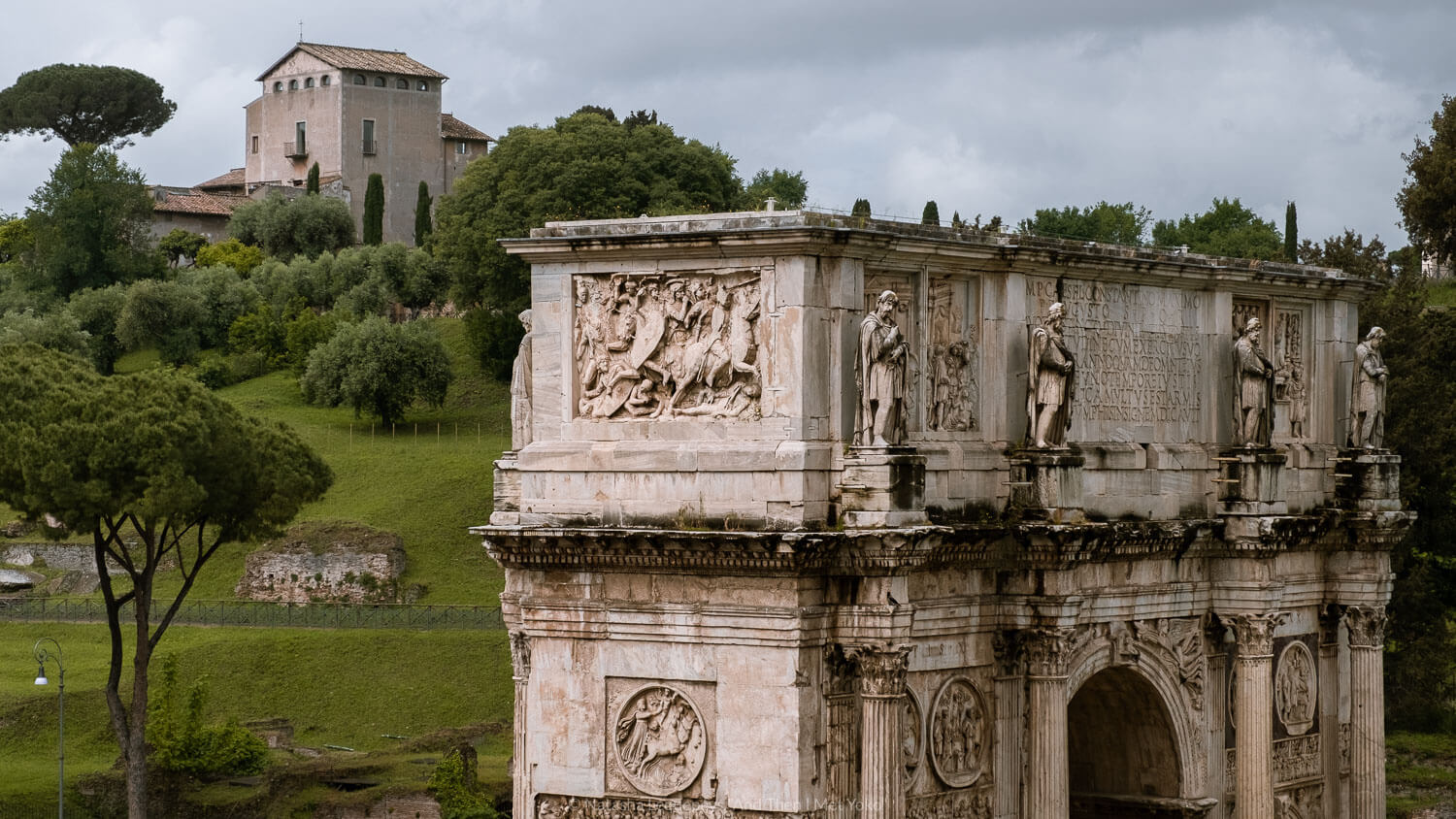









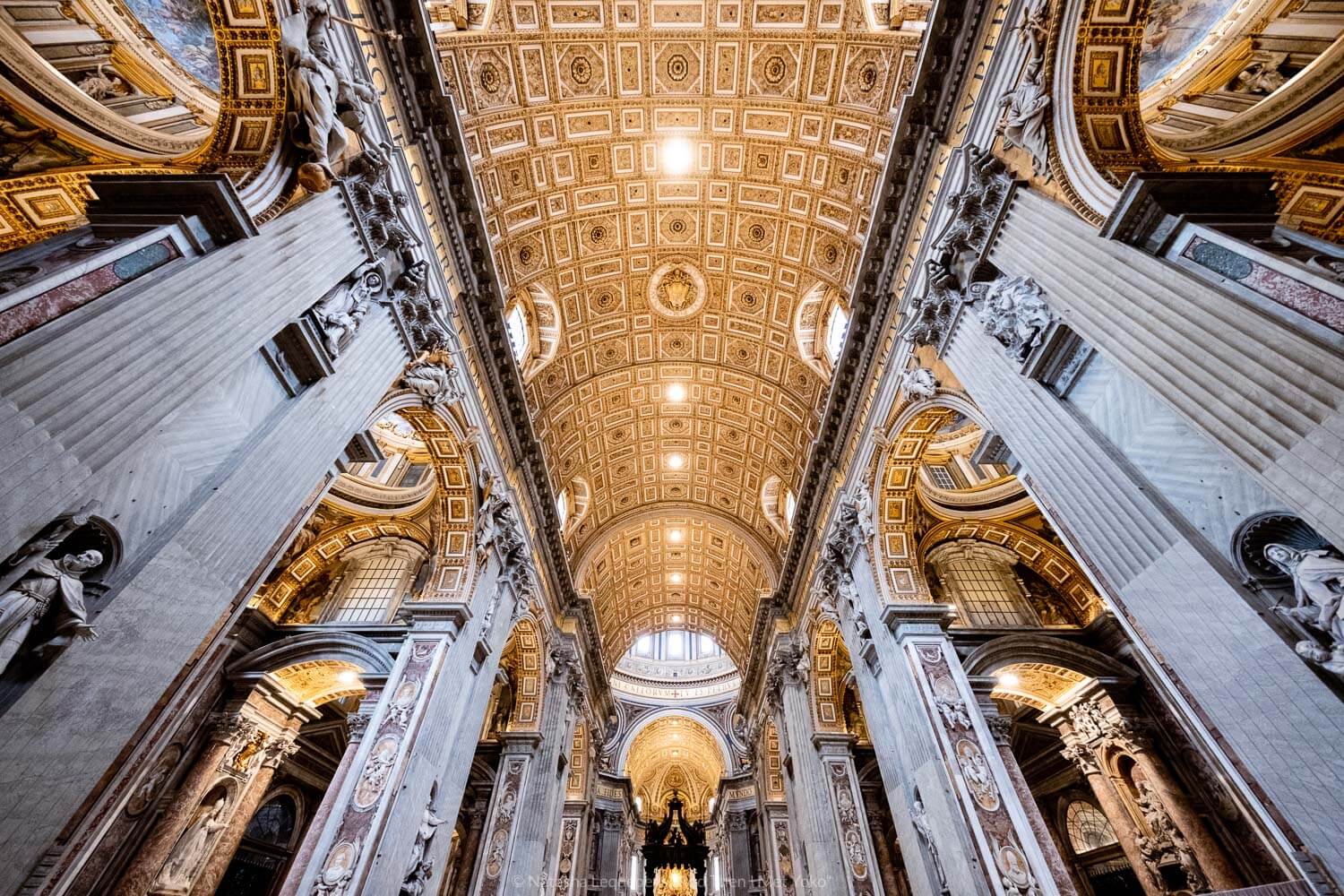


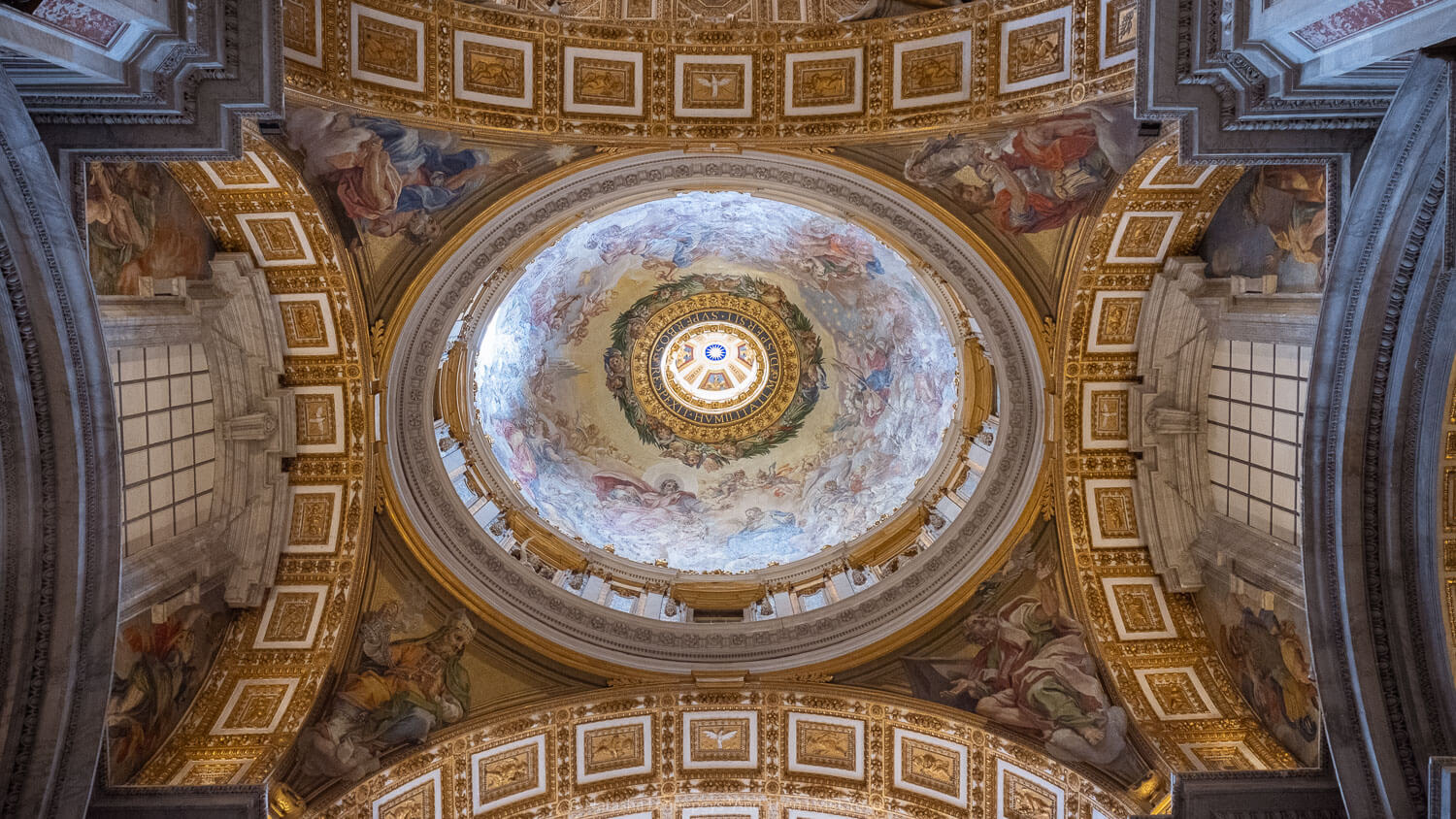



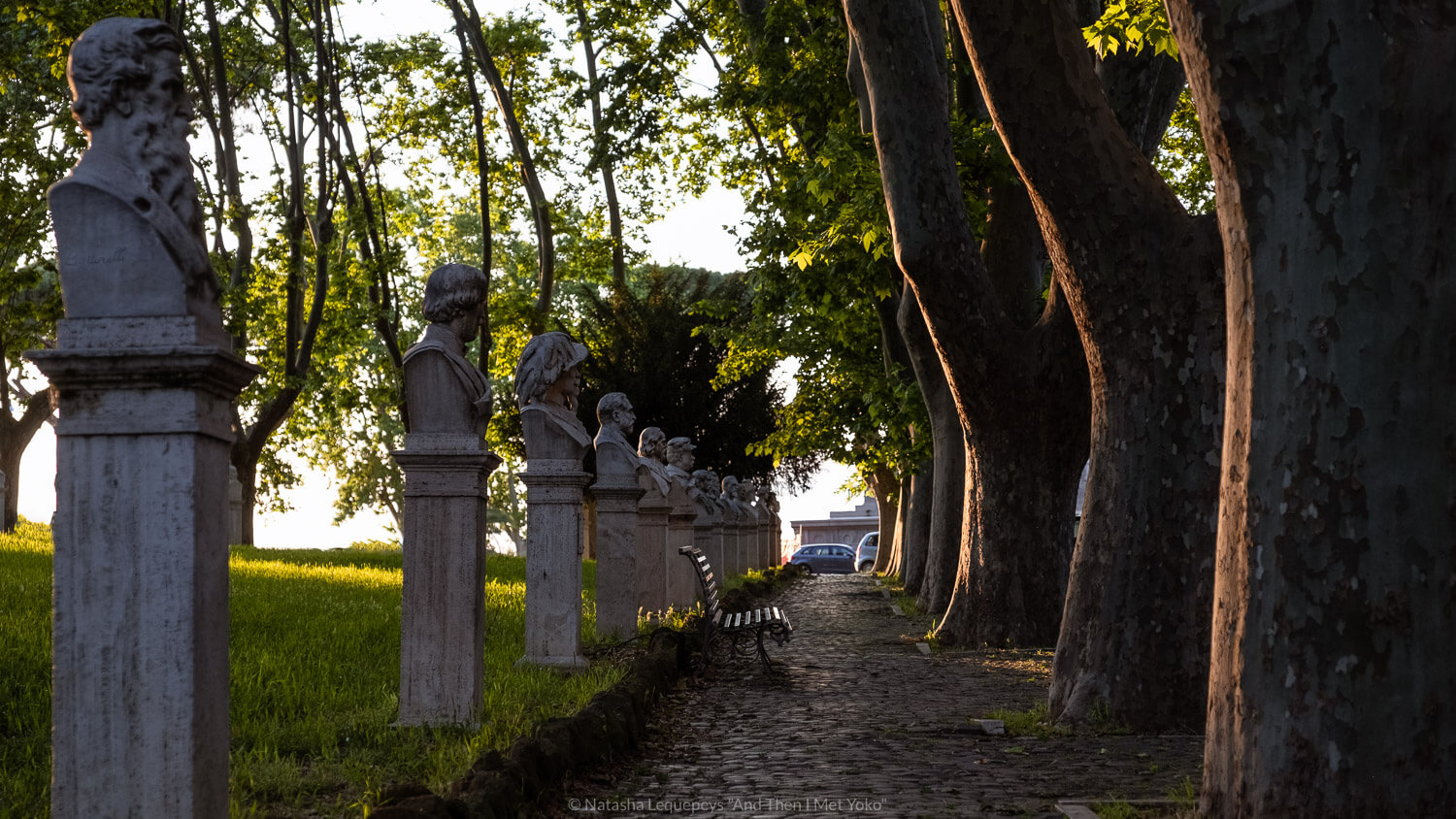





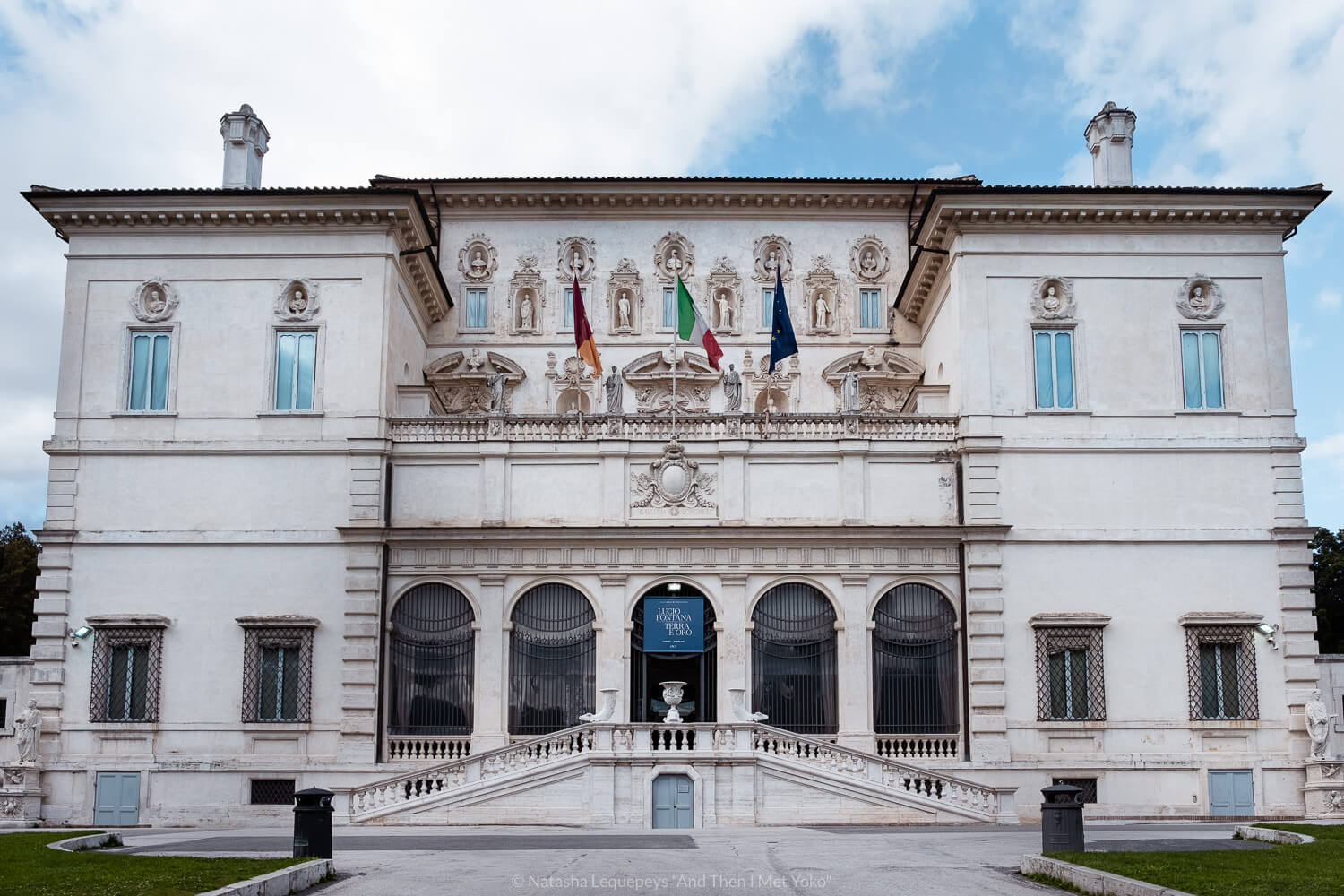
























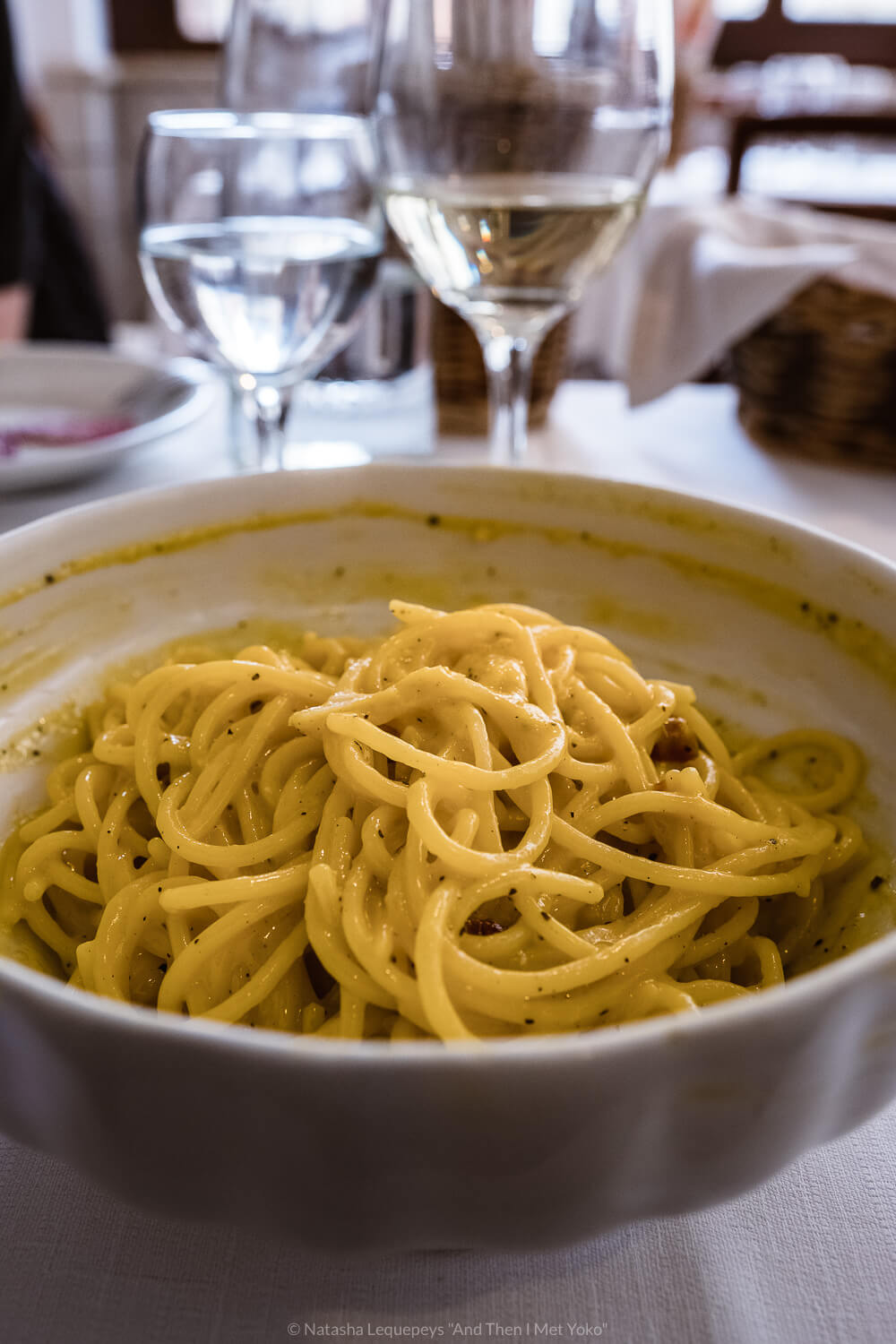










I did a 2-hour walking tour of the Jewish Ghetto in Rome. Here is some photography and fascinating things I learned about the history of the Jewish Quarter.